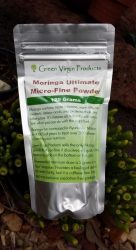
Lachanophobia is the fear of vegetables – do you have it? Many people are averse to veggies, but they’re a major source of nutrition, and one of the only ways to protect yourself against diet-induced malnutrition. So, how do you get more veggies into your diet without angst or anxiety? Here’s how.
Experiment
Be adventurous. You love trying new and exciting things. Well, here’s your chance to try new vegetables. Not buying it? Think about this for a minute: what kinds of vegetables have you really tried? Most peoples’ experiences with veggies are frozen peas, carrots, or the broccoli, cauliflower, and carrot “medley.”
Why not try fried eggplant, raw or marinated carrots, baked cauliflower, or fried zucchini? My kids LOVE baked cauliflower! I cut up the pieces bite size, then toss with olive oil and salt. Then I spread it on a cookie sheet that has been covered with tin foil, sprinkle dill over the top of the cauliflower, then bake at 400° for 30-45 minutes. Keep an eye on it and when the edges are brown and crispy, it’s done!
You could also try incorporating more homemade versions of traditional potato dishes, including sweet potato varieties you may not be familiar with. Asian sweet potatoes, for example, are sweeter cousins of the Beauregard variety you find in the grocery store (the orange flesh-colored sweet potatoes).
Try Green Powders
 Green powders are basically dehydrated green vegetables that have been pulverized and put in a can. Usually, you just add a scoop or two to a cup of water and drink it down. They don’t always taste good, but many of the ones being sold today often add sweeteners to help with the taste.
Green powders are basically dehydrated green vegetables that have been pulverized and put in a can. Usually, you just add a scoop or two to a cup of water and drink it down. They don’t always taste good, but many of the ones being sold today often add sweeteners to help with the taste.
A few top-shelf varieties are actually pretty tasty. Now, it’s not going to go down like a can of soda, but it shouldn’t make you gag either. Mixing green powders in a tasty smoothie is the best way to get it down.
Green powder formulas do have a drawback though – they can be expensive. You get what you pay for though! I personally use Green Virgin Products Moringa Powder. Moringa is the most nutrient dense plant on the planet and has caught the attention of scientists and nutritionist around the world. Moringa has more vitamins, minerals, proteins, anti-oxidants, and amino acids combined than any other known food on the planet. It’s definitely something you can easily add into your diet that will give you numerous health benefits. If you don’t like the idea of mixing Moringa powder into your drinks and smoothies, just get Moringa Capsules.
Try Supplements
Life Extension Foundation’s LEF Mix has been the most comprehensive vitamin supplement on the market for probably the better part of 10 years. It’s one of the few companies that uses whole food complexes and derivatives in the product, rather than synthetic isolates.
The company is big on being pharmaceutical grade, so don’t expect their products to be cheap. Still, when you calculate what you’d pay for each ingredient individually, the LEF mix is actually a good deal.
Of course, LEF isn’t the only product on the market. There are lots of manufacturers that make vitamin supplements. Try to stick with the manufacturers that use whole foods or whole food derivatives in their product. If it’s essentially a dehydrated fruit or vegetable product, it’s going to be a lot better for you than if it’s synthetic.
You can (and should) also look for individual vitamins and minerals that you may be deficient in. Often, this will be a better approach than carpet-bombing your system indiscriminately with vitamins and minerals in a multi formula.
The best way to go about doing this is to get a red blood cell micronutrient test to discover what you’re deficient in. Then, fill in the gaps as necessary. If you don’t want to go through the trouble of blood testing, you’ll never really know what you’re deficient in. But, you can try to piece together deficiencies by analyzing your diet.
If you don’t eat a lot of liver or eggs, you may be deficient in choline. Don’t eat a lot of greens? You may be deficient in folate. Don’t get a lot of sunshine? You may be deficient in vitamin D. It’s not perfect (far from it), but it’s better than nothing.
Add Fat
If you’re not a big fan of vegetables, one of the reasons might be fat – specifically, you need to add more fat to the veggies to make them appealing. Who doesn’t love bacon and butter? Most people believe that these foods are unhealthy, but new research is showing that both bacon and butter are not only not bad for you,they may be very good for you.
So, slather on some butter and dress up those veggies with some cheese and bacon, and you’ll find a new appreciation for greens.
In fact, most things, from cabbage to broccoli to cauliflower to kale, can be improved with nothing more than a few tablespoons of butter or ghee and a pinch of salt.
Drink Infusion H2O
If you just can’t get into fruits, the Infusion H2O bottle might be for you. Basically, this nifty product lets you put fruit right into the bottle and it filters water through them. You get all of the benefits of the fruits without having to eat them.
But, you can also infuse water with the vitamins and minerals from vegetables and herbs too. The possibilities are nearly endless. Of course, many people are a little apprehensive about soaking vegetables in water, but if you mix it with fruit add a sprig of mint and some sugar substitute, you’ll probably find a new-found love for not just fruit and veggies, but water too.
Guest Blogger: Emma Mack is a personal trainer and fitness consultant. She enjoys incorporating new ideas into her training and health routines. Her articles mainly appear on fitness, health and lifestyle blogs.



